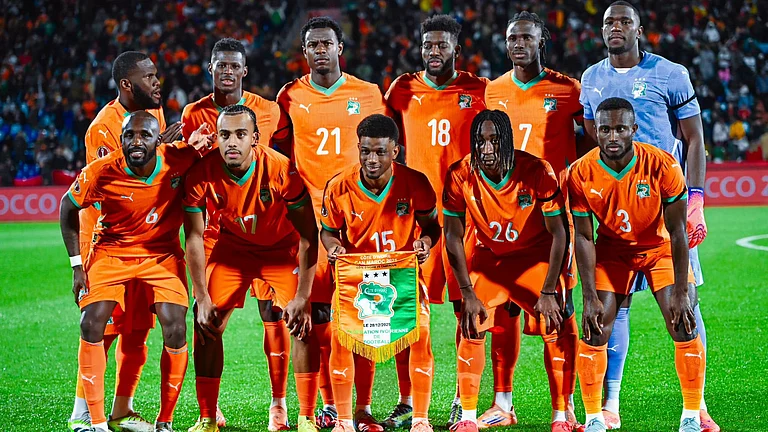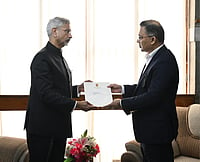Last week, in a landmark move, United States President Joe Biden signed legislation to codify federal protections for same-sex and interracial marriages.
While addressing a crowd gathered to celebrate the federal protections in the Respect for Marriage Act, Biden said, “the road to this moment has been long,” but “those who believe in equality and justice – you never gave up.”
The move received a huge welcome across the world, especially since it arrived just six months after Roe Vs Wade — the landmark decision that established the constitutional right to abortion in the United States in 1973— was reversed by the US Supreme Court.
Biden had himself termed the move as, “a sad day for the court and the country”. Although the potential impact of the Respect for Marriage Act is limited, as it does not guarantee the right to marry.
Also, the law does nothing to prevent such marriages from becoming illegal again in states that might oppose them if the Supreme Court decides to overturn Obergefell — a landmark decision by the US Supreme Court that guaranteed the fundamental right to marry to same-sex couples. Nonetheless, citizens see the Respect for Marriage Act as an important step to be celebrated.
Currently, there are at least 33 countries where same-sex marriage is legal: Argentina, Australia, Austria, Belgium, Brazil, Canada, Chile, Colombia, Costa Rica, Denmark, Ecuador, Finland, France, Germany, Iceland, Ireland, Luxembourg, Malta, Mexico, the Netherlands, New Zealand, Norway, Portugal, Slovenia, South Africa, Spain, Sweden, Switzerland, Taiwan, the United Kingdom, the United States of America, Uruguay, and Mexico being the latest one.
But, in many countries, same-sex married couples do not share all of the same rights and benefits as heterosexual couples, such as the right to adoption. For example, in countries like Estonia, San Marino, and Taiwan— where same-sex marriage is legal— only step-child adoption is permissible. In step-child adoption, the partner in a relationship can adopt the natural and adopted child of his or her partner. Although, in Italy, homosexual couples can marry through civil union step-child adoption is not legal and can only be recognized by court order under very limited circumstances.
Moreover, same-sex couples may also be subject to additional limitations in some nations. For instance, in Taiwan same-sex marriage is only available to Taiwanese citizens or a citizen of a foreign country that recognizes same-sex marriage, seeking to marry a Taiwanese citizen.
Though now slowly countries are accepting same-sex marriages, history has many instances of such unions; where two women or two men lived a married life. However, public displays of such unions are rare to find. This is why one can find, several records of a strong form of ritualistic friendship (for instance prince Edward and king Gaveston in the 14th century) but exclusive cohabitation or marriage between same-sex couples remained rare sight in historical records.
Since marriage was not always legal creation – Kings and religious institutions defined the rules of such unions, and these rules were often patriarchal in nature. Therefore, unions of same-sex couples were wrapped behind the veil of secrecy. These couples avoided coming out in public to avoid public condemnation and killing. For Instance, in Italy, in 1497, the 22-year-old apothecary Carlo di Berardo d’Antonio and the dyer Michele di Bruno da Prulli were living together as a couple; when it was found – they were fined and banished. Still, in Italy, it was relatively acceptable, while in other parts of Europe many men, who were in love with another man often married a woman and had children. Many examples of such men include writers like Oskar Wilde.
In a piece for the Guardian, Historian Faramerz Dabhoiwala traced the history of Same-sex marriage. He found after 1600, the Dutch scholars Rudolf Dekker and Lotte van de Pol discovered many examples of “female husbands” – as in post-renaissance Europe, where the man was considered the head of the family, several women who were living with their female partners disguised themselves as a man to lead a safe life.
By the 18th century, things started to change – a revolution of ideas about male and female sexuality – helped many same-sex couples to live together and accept themselves.
With the Netherlands becoming the first country to allow same-sex unions in the year 2000, a wave of acceptance for same-sex marriages made many western countries consider their law. However, world powers like Russia stand in contrast – totally unperturbed to toughen “anti-gay” laws.
Russian President Vladimir Putin, this week signed a law, that prohibits any promotion of what it calls "LGBT propaganda" – any dissemination of information or action that is “deemed” an attempt to promote homosexuality in public, online, or in films, books or advertising, could cause heavy fines. Russia’s attitude shows, despite a wave of change, same-sex marriages are considered an aberration in many societies, and it will require many efforts from the LGBT community to get the rights in their respective countries.


























